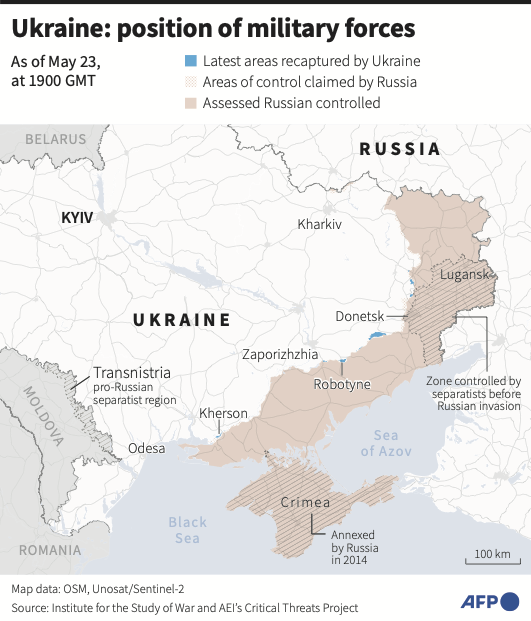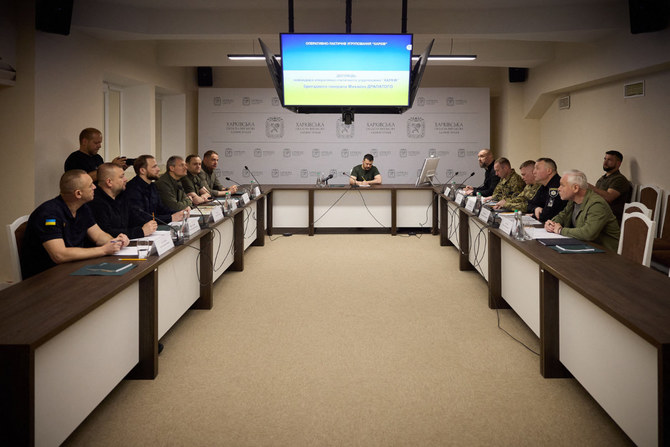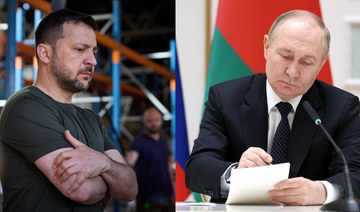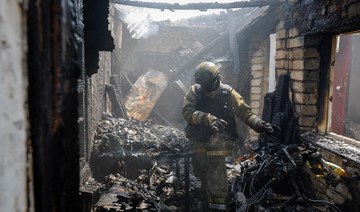California’s largest active fire exploded in size on Friday evening, growing rapidly amid bone-dry fuel and threatening thousands of homes as firefighters scrambled to meet the danger.
The Park Fire’s intensity and dramatic spread led fire officials to make unwelcome comparisons to the monstrous Camp Fire, which burned out of control in nearby Paradise in 2018, killing 85 people and torching 11,000 homes.
More than 130 structures have been destroyed by this fire so far, and thousands more are threatened as evacuations were ordered in four counties: Butte, Plumas, Tehama and Shasta. It stood at 480 square miles (1,243 square kilometers) on Friday night and was moving quickly north and east after igniting Wednesday when authorities said a man pushed a burning car into a gully in Chico and then calmly blended in with others fleeing the scene.
“There’s a tremendous amount of fuel out there and it’s going to continue with this rapid pace,” Cal Fire incident commander Billy See said at a briefing. He said the fire was advancing up to 8 square miles (21 square kilometers) an hour on Friday afternoon.
Officials at Lassen Volcanic National Park evacuated staff from Mineral, a community of about 120 people where the park headquarters are located, as the fire moved north toward Highway 36 and east toward the park.
Communities elsewhere in the US West and Canada were under siege Friday, from a fast-moving blaze sparked by lightning sent people fleeing on fire-ringed roads in rural Idaho to a new blaze that was causing evacuations in eastern Washington.
In eastern Oregon, a pilot was found dead in a small air tanker plane that crashed while fighting one of the many wildfires spreading across several Western states.
More than 110 active fires covering 2,800 square miles (7,250 square kilometers) were burning in the US on Friday, according to the National Interagency Fire Center. Some were caused by the weather, with climate change increasing the frequency of lightning strikes as the region endures record heat and bone-dry conditions.
A fire in eastern Washington destroyed three homes and five outbuildings near the community of Tyler, which was evacuated Friday afternoon, said Ryan Rodruck, spokesperson with the Washington Department of Natural Resources. Firefighters were able to contain the Columbia Basin fire in Spokane County to about half a square mile (1.3 square km), he said.
In Chico, California, Carli Parker is one of hundreds who fled their homes as the Park Fire pushed close. Parker decided to leave her Forest Ranch residence with her family when the fire began burning across the street. She has previously been forced out of two homes by fire, and she said she had little hope that her residence would remain unscathed.
“I think I felt like I was in danger because the police had come to our house because we had signed up for early evacuation warnings, and they were running to their vehicle after telling us that we need to self-evacuate and they wouldn’t come back,” said Parker, a mother of five.
Ronnie Dean Stout, 42, of Chico, was arrested early Thursday in connection with the blaze and held without bail pending a Monday arraignment, officials said. There was no reply to an email to the district attorney asking whether the suspect had legal representation or someone who could comment on his behalf.
Fire crews were making progress on another complex of fires burning in the Plumas National Forest near the California-Nevada line, said Forest Service spokesperson Adrienne Freeman. Most of the 1,000 residents evacuated by the lightning-sparked Gold Complex fires were returning home Friday. Some crews were peeling off to help battle the Park Fire.
“As evidenced by the (Park) fire to the West, some of these fires are just absolutely exploding and burning at rates of spread that it is just hard to even imagine,” Tim Hike, Forest Service incident commander of the Gold Complex fire about 50 miles (80 km) northwest of Reno, said Friday. “The fire does not look that bad right up until it does. And then that just might be too late.”
Forest Ranch evacuee Sherry Alpers, fled with her 12 small dogs and made the decision to stay in her car outside a Red Cross shelter in Chico after learning that animals would not be allowed inside. She ruled out traveling to another shelter after learning the dogs would be kept in cages, since her dogs have always roamed free at her home.
Alpers said she doesn’t know whether the fire spared her home or not, but she said that as long as her dogs are safe, she doesn’t care about the material things.
“I’m kind of worried, but not that much,” she said. “If it’s gone, it’s gone.”
Brian Bowles was also staying in his car outside the shelter with his dog Diamon. He said he doesn’t know if his mobile home is still standing.
Bowles said he only has a $100 gift card he received from United Way, which handed them out to evacuees.
“Now the question is, do I get a motel room and comfortable for one night? Or do I put gas in the car and sleep in here?” he said. “Tough choice.”
In Oregon, a Grant County Search and Rescue team on Friday morning located a small single-engine air tanker that had disappeared while fighting the 219-square-mile (567 square kilometers) Falls Fire burning near the town of Seneca and the Malheur National Forest. The pilot died, said Bureau of Land Management information officer Lisa Clark. No one else was aboard the bureau-contracted aircraft when it went down in steep, forested terrain.
The most damage so far has been to the Canadian Rockies’ Jasper National Park, where a fast-moving wildfire forced 25,000 people to flee and devastated the park’s namesake town, a World Heritage site.
In Idaho, lightning strikes sparked fast-moving wildfires and the evacuation of multiple communities. The fires were burning on about 80 square kilometers Friday afternoon.
Videos posted to social media include a man who said he heard explosions as he fled Juliaetta, about 43 kilometers southeast of the University of Idaho’s campus in Moscow. The town of just over 600 residents was evacuated Thursday just ahead of roaring fires, as were several other communities near the Clearwater River and the Nez Perce Tribal Hatchery Complex, which breeds salmon.
There’s no estimate yet on the number of buildings burned in Idaho, nor is there information about damage to urban communities, officials said Friday morning.
Oregon still has the biggest active blaze in the United States, the Durkee Fire, which combined with the Cow Fire to burn nearly 1,630 square kilometers. It remains unpredictable and was only 20 percent contained Friday, according to the government website InciWeb.
The National Interagency Fire Center said more than 27,000 fires have burned more than 15,000 square kilometers in the US this year, and in Canada, more than 22,800 square kilometers have burned in more than 3,700 fires so far, according to its National Wildland Fire Situation Report issued Wednesday.




























